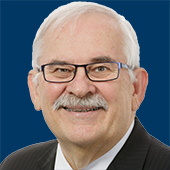
For almost two years the work of EMPHN has been about helping the primary care system respond to the ravages of SARS-CoV-2. Our staff have dealt with the trials and tribulations of the vaccine rollout and stepped-up time and time again to mitigate inadequate supply and help maximise the number of people vaccinated, especially residents and staff of residential aged care. We also moved quickly to support general practice — redeploying staff from other projects into the COVID response, distributing personal protective equipment and providing testing assistance. Our not-for-profit structure meant we didn’t have to focus on financial returns to shareholders, but rather our support to stakeholders and the community.
COVID brought many stresses onto the primary care system and created opportunities. I want to highlight one: telehealth. Our new infectious environment caused a pivot to telehealth with payment systems – and sometimes practice systems – not ready. Telehealth policy must strengthen good primary care, not weaken it. It needs to encourage continuity of care and facilitate responsiveness to a patient’s need. This is an important design task which still requires more work on the Commonwealth’s behalf to get the Medicare Benefits Scheme (MBS) telehealth settings right.
The 2019-20 federal budget included an allocation for a voluntary patient registration system for people over 70. Late in 2020, the government released the final report of its MBS review, including recommendations about primary care which again referred to voluntary patient registration/enrolment. Then there was a discussion paper about a 10-year primary health care plan. This paper again refers to voluntary patient enrolment, this time as a ‘building block for reform, helping formalise a single health care reference point’. This policy direction is not new: the 2009 final report of the National Health and Hospitals Reform Commission supported voluntary enrolment, as did a 2015 report on primary care.
I agree with this policy, as do the RACGP, the AMA and the College of Rural and Remote Medicine. Unfortunately, these reports are not cumulative — they simply reiterate the same idea without progressing it in a meaningful way. A veil of vagueness has been cast over the idea and so no one can object, but there is no progress. But the devil is always in the detail. Sometimes the idea is voluntary patient registration — no money changes hands but the patient may get access to telehealth items. There is a big difference between a patient enrolment scheme which pays a practice or practitioner an enrolment fee of $10 a year and one which pays $10,000. The most likely (eventual) amount will lie between these two extremes but one closer to the lower end will involve lower expectations of what the practice must provide to the enrolled person compared to a payment at the higher end. However, any shift to patient registration or enrolment is to be welcomed. Such a shift creates a patient population which is linked to the practice and provides the basis for measurement of, and improvement in, quality of primary care. It has the potential to reduce waste, for example, ensuring that care plans are developed by the GPs who know the patient best.
My own view is that primary care will be stronger with a bigger enrolment fee rather than a smaller one, with concomitantly greater expectations on the practice. This scenario is key to ensuring good quality primary care management of chronic disease.
With a larger fee we could see expectations about telehealth availability, multi-disciplinary practice, employing nurses for pro-active care and calling patients to see how they are going, enhanced expectations about recall systems for preventive care, and better engagement about mental illness.
What does this all mean for a PHN? An enhanced emphasis on enrolment funding could be accompanied by more local accountability in accreditation, and more feedback to practices, and this could be a key role for EMPHN.
Enrolment funding should be substantial and in addition to existing primary care funding to help redress the current underfunding of primary care. It would help make general practice a more attractive career choice, benefiting all primary care professionals and patients alike. It would also help the PHN in its emphasis on both improving primary care and the health of our population.
Enrolment funding won’t fix everything, of course, and needs to be supplemented by systems to encourage practices to take on more complex services, such as complex wound dressings or fracture care, which require costs to be passed on to patients at present.
Finally, I would like to congratulate Janine Wilson on her first year as our CEO. Starting as CEO in lockdown has been hard, but Janine is leading the improvement in EMPHN’s culture and capability extremely well. A great start.
Thanks are also due to the EMPHN staff who dropped everything and got their hands dirty distributing masks and hitting the phones to ensure vaccines weren’t wasted, amongst a myriad of other contributions throughout the year.
I also acknowledge our clinical and consumer stakeholders. Although we had some engagement events (and thanks to those who attended those virtually) our priorities were the immediate challenges of the pandemic and we have not been as consultative as I would’ve liked. We’ll do better next year.
- Dr Stephen Duckett
Read the full EMPHN 2020-2021 Annual Report here
(The policy views here are my own and not necessarily shared by my Board colleagues or staff at EMPHN).
